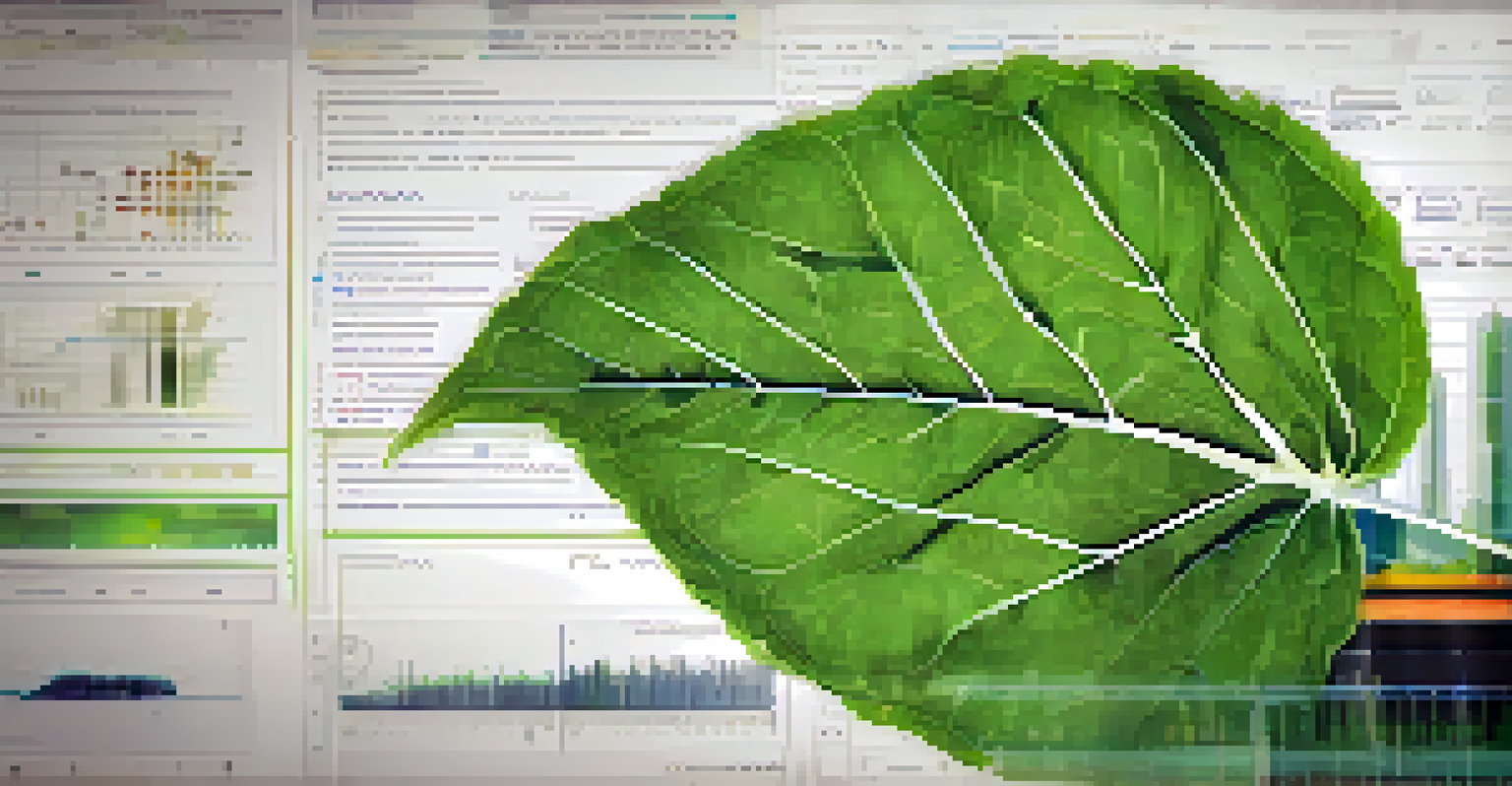Leveraging Genomic Selection for Resilient Plant Breeding

Understanding Genomic Selection in Plant Breeding
Genomic selection is a revolutionary approach in plant breeding that utilizes DNA information to enhance selection accuracy. By analyzing an organism's entire genome rather than just a few traits, breeders can predict plant performance more effectively. This method enables quicker identification of desirable traits, which is crucial for developing resilient crop varieties.
Genomics is revolutionizing the way we breed crops, allowing us to create varieties that can withstand the challenges of climate change.
Imagine trying to find a specific book in a vast library. Instead of searching for it by title or author, you could scan the entire catalog to pinpoint its location. Similarly, genomic selection allows breeders to sift through a plant's genetic information to make informed decisions.
As climate change poses new challenges to agriculture, the need for resilient crops becomes even more pressing. Genomic selection provides the tools necessary for breeders to respond swiftly to these challenges, ensuring food security for future generations.
The Role of Genomic Data in Plant Breeding
Genomic data serves as the backbone of genomic selection, providing insights into the genetic makeup of plants. This data includes information from DNA sequencing, which helps identify genetic markers associated with specific traits. By leveraging this information, breeders can focus their efforts on the most promising candidates, significantly reducing the time needed to develop new varieties.

Think of genomic data like a treasure map, guiding breeders toward valuable genetic gems hidden within plant genomes. With this map in hand, breeders can avoid the guesswork traditionally associated with plant selection.
Genomic Selection Enhances Breeding
Genomic selection improves the accuracy of plant breeding by analyzing the entire genome to identify desirable traits more efficiently.
Moreover, the integration of advanced technologies, such as machine learning, enhances the analysis of genomic data. This combination of data and technology not only streamlines the breeding process but also improves the chances of developing plants that thrive in changing environments.
Benefits of Genomic Selection for Crop Resilience
One of the most significant advantages of genomic selection is its ability to enhance crop resilience. By selecting for traits that confer resistance to pests, diseases, and environmental stressors, breeders can produce plants that are better equipped to withstand adverse conditions. This resilience is crucial in maintaining yield stability amidst unpredictable climate patterns.
The future of food security lies in the ability to harness genomic data to improve crop resilience and sustainability.
Imagine a sturdy tree that bends but does not break during a storm. Similarly, resilient crops can adapt to environmental stress while maintaining productivity. This adaptability ensures a consistent food supply, even in challenging climates.
Furthermore, resilient crops contribute to sustainable agriculture by reducing the need for chemical inputs. Healthy plants that naturally resist pests or diseases can lower reliance on pesticides and fertilizers, promoting a more eco-friendly approach to farming.
Implementing Genomic Selection in Breeding Programs
To effectively implement genomic selection, breeding programs must first establish a robust framework for data collection and analysis. This involves investing in technologies such as high-throughput genotyping and bioinformatics tools. By building a solid foundation, breeders can maximize the potential of genomic selection in their programs.
Consider this process akin to constructing a building; a strong foundation is essential for ensuring the structure's stability. Similarly, a well-organized data system supports the entire breeding initiative, allowing for seamless integration of genomic information.
Resilient Crops for Food Security
By selecting traits for pest and disease resistance, genomic selection helps develop crops that can better withstand environmental challenges.
Training and collaboration among breeders, geneticists, and data scientists are also vital. By fostering a team environment, the breeding community can share insights and refine strategies for utilizing genomic selection effectively.
Challenges and Considerations in Genomic Selection
While genomic selection offers numerous benefits, it is not without challenges. One significant hurdle is the need for extensive genomic data across diverse plant populations. Without sufficient data, the predictive models used in genomic selection may not perform optimally.
Think of it like trying to predict the weather with limited information. The more data you have, the more accurately you can forecast conditions. Similarly, breeders require comprehensive genomic information to ensure successful selection.
Additionally, ethical considerations surrounding genetic modification and access to genomic technologies must be addressed. Engaging in open dialogues about these issues can help foster trust and facilitate the responsible use of genomic selection in plant breeding.
Future Directions in Plant Breeding with Genomics
The future of plant breeding is bright with the integration of genomic selection. As technology continues to advance, we can expect more efficient breeding processes and the development of crops that are tailored to meet global needs. Innovations in gene editing and molecular breeding are likely to complement genomic selection, further enhancing resilience.
Imagine a world where crops are not only high-yielding but also capable of flourishing in extreme conditions. This vision is within reach as breeders harness the power of genomics to create plants that can adapt to a rapidly changing world.
Collaboration Drives Genomic Innovation
Effective implementation of genomic selection relies on collaboration among breeders, geneticists, and data scientists to optimize breeding programs.
Moreover, the globalization of genomic technologies means that breeders from different regions can collaborate and share resources. This collective effort will undoubtedly accelerate the development of resilient crops that benefit communities worldwide.
Conclusion: Embracing Genomic Selection for a Sustainable Future
In conclusion, genomic selection represents a pivotal advancement in plant breeding, offering the tools needed to create resilient crops for a sustainable future. By harnessing genomic data and innovative technologies, breeders can address the pressing challenges posed by climate change and food security. The time to embrace this approach is now, as the world faces increasing agricultural demands.
Picture a gardener nurturing a diverse array of plants, each uniquely suited to thrive in its environment. Similarly, genomic selection empowers breeders to cultivate a rich tapestry of resilient crops that can adapt to various challenges.

As we move forward, continued investment in research, technology, and collaboration will be essential. By working together, we can ensure that future generations enjoy the benefits of resilient agriculture, fostering a healthier planet and a more secure food system.